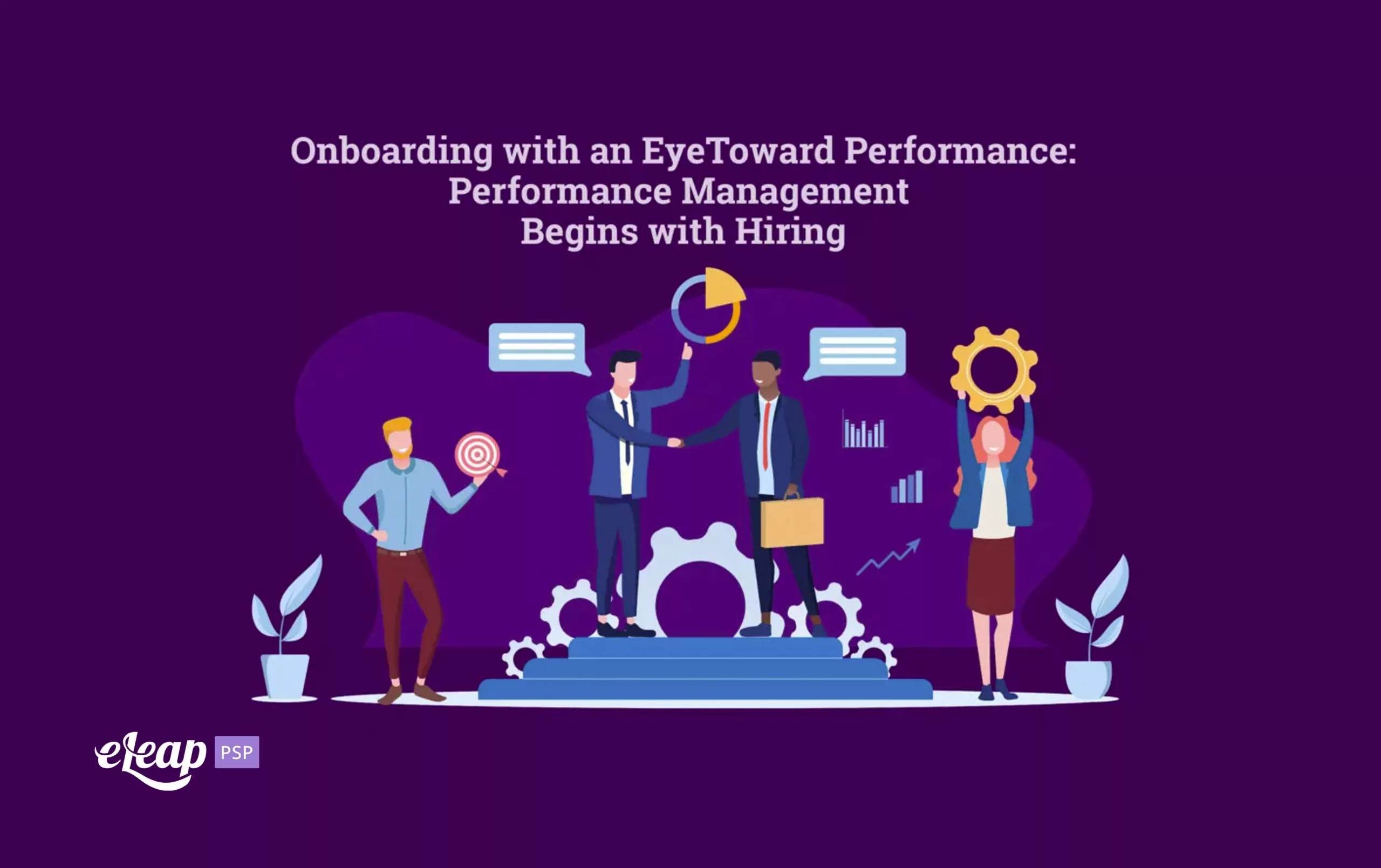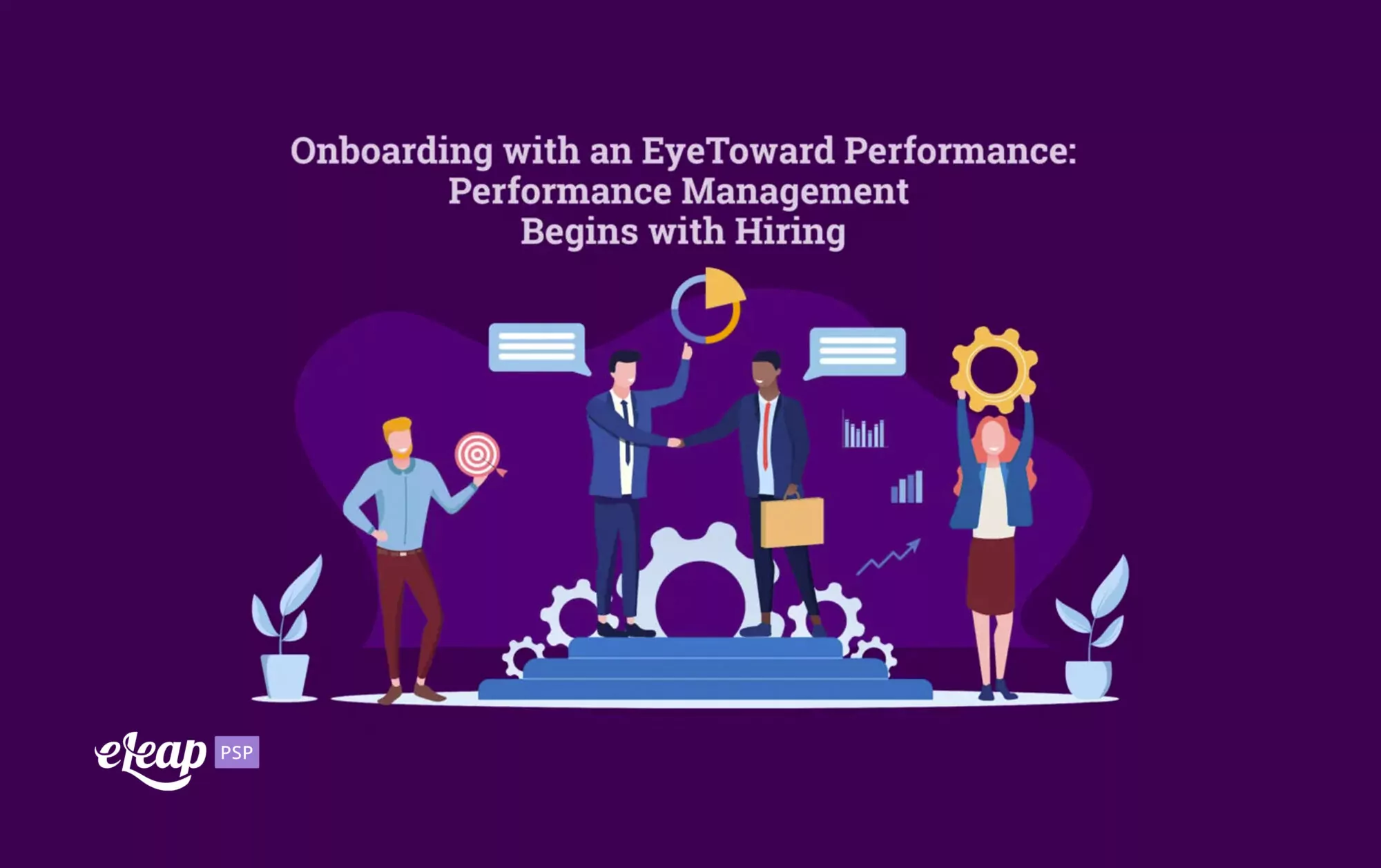Onboarding with an Eye Toward Performance: Performance Management Begins with Hiring

For many managers, performance management becomes a consideration well after an employee is hired and completes the onboarding process. That seems to make sense, too. After all, it is hard to manage performance before an employee has had time to adjust to their new role within the organization, the workflows in place, and the tools they’re required to use. Explore how eLeaP’s Performance Management Platform can simplify evaluations, boost productivity, and drive measurable results.
While it might seem like common sense, the truth is that this is the wrong approach. It ultimately short-circuits your performance management efforts down the road. In fact, it is increasingly important for organizations to take performance management steps as early as possible, including during the hiring and onboarding processes. How does this work, though?

The Importance of Onboarding
Many managers think of onboarding as a “getting to know you” process. This is when employees begin learning the ropes of their position, getting to know the tools and technology they may be using, and meeting their team members and coworkers. It’s a period of flexibility when expectations are usually low, and there is little focus on performance.
Increasingly, this is seen as the wrong path to take. Why is that? Simply put, you have one chance to make a good impression. If you fail to engage employees during the onboarding process, it can take an exorbitant amount of time and effort to rectify that situation down the road. This is also when you should set the tone for performance expectations and introduce them to the check-ins and one-on-ones that you’ll be using to monitor and manage performance moving forward.
Onboarding must be more than a honeymoon period, though. This is the period when you can start fostering a sense of belonging, an idea of interconnectedness, and getting employee buy-in (engagement) with their role and responsibilities. Doing that will require a strategic, step-by-step approach, though.
Key Steps in the New Onboarding Process
Obviously, managing performance during the onboarding process is going to look a lot different from doing so once the employee is comfortable in their role within the organization. During this initial period, you need to begin setting expectations and laying the groundwork for good performance and high employee engagement. To do this, follow these steps:
Get Social – First, it’s time to introduce the new employee to their team members, as well as to their role on the team and you (the manager). This is important for several reasons. By introducing them to other team members, it becomes possible for them to feel socially accepted and engaged personally and professionally. Interpersonal relationships are as crucial to employee performance as anything else, so begin early.
You should also get to know them and let them get to know you. Lay out how you will work with them, including your performance management practices. Specify when your one-on-ones will occur. Go over the flow of your check-ins, as well.
Give the new hire a chance to begin forming an emotional bond not just with coworkers, but with the organization. Understanding their role and how their efforts support the business in progressing toward its goals is important for this. Introduce them to what they do and how that integrates with what the team does. Then, extrapolate from that and highlight how the combined efforts of the team (including the new employee) support the business in reaching milestones and goals.
Lay It Out – Now it’s time to get specific with the new hire. Help them understand what success looks like and what is expected of them in their role. A lack of clarity on roles and responsibilities is a common driver of poor performance, so give them plenty of examples and encourage them to ask questions as few as just half of all employees have a clear understanding of what’s expected of them at work. This is your chance to prevent that from occurring with your new hire (and hopefully with your other team members).
Clarifying roles and responsibilities is about more than driving good performance, though. With clarity and understanding comes improved retention and better productivity. It also affects engagement and ensures that employees can focus on what they’re doing, confident that it’s what is expected of them.
Rinse and Repeat – There’s an idea out there that onboarding should take this much time and no more. Whether you allow a week or two weeks is irrelevant – it’s the wrong idea. Why is that?
Simply put, there is nothing set in stone that onboarding should take only X amount of time. This is one of the hardest things for some managers to wrap their minds around. Onboarding is not complete until your new team member feels like a veteran, like they’ve been part of the team for a long time. They’re ready to be cut loose from onboarding when they feel comfortable helping other new hires learn the ropes.
Not only is this important for employee comfort and confidence, but it is crucial for performance. When employees feel supported and free to ask questions or to feel unsure, they’re better able to adapt and perform at their best. It’s only when new hires feel that it is no longer acceptable to learn new things or to be unsure about a process that performance begins to degrade.
This is one of the reasons that organizations need to create and encourage a culture of experimentation and learning. When employees are free to fail without worrying about punitive repercussions, performance ramps up dramatically. That is supported by ongoing learning and development, which further increases performance.
Onboard with Confidence
As you can see, performance management begins with the onboarding process. By setting the tone early, you help lay the foundation for outstanding performance and encourage new hires to be the best they can be. However, doing so will require a deep dive into the corporate culture and developing a willingness to work with new hires as long as it takes to make them feel like veterans.